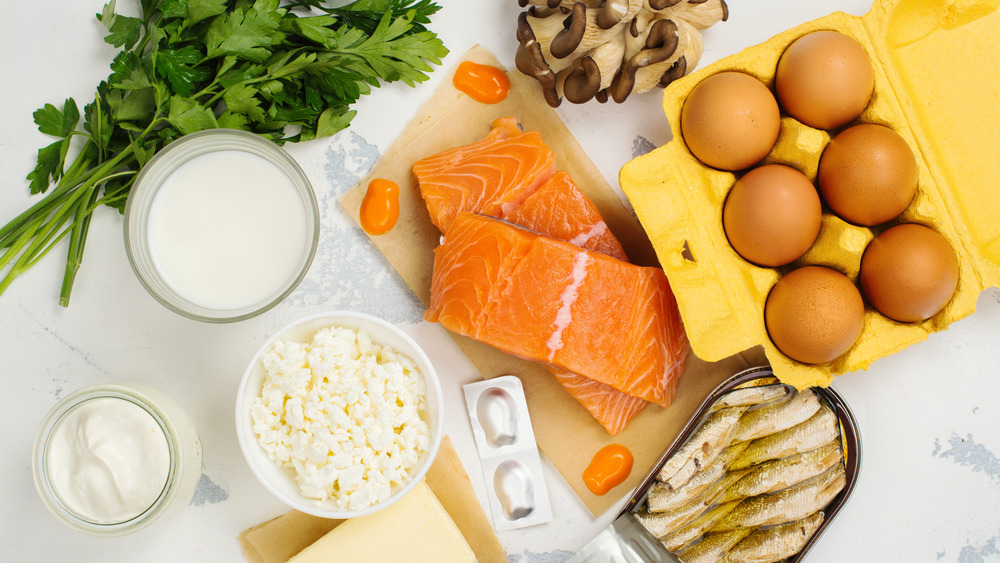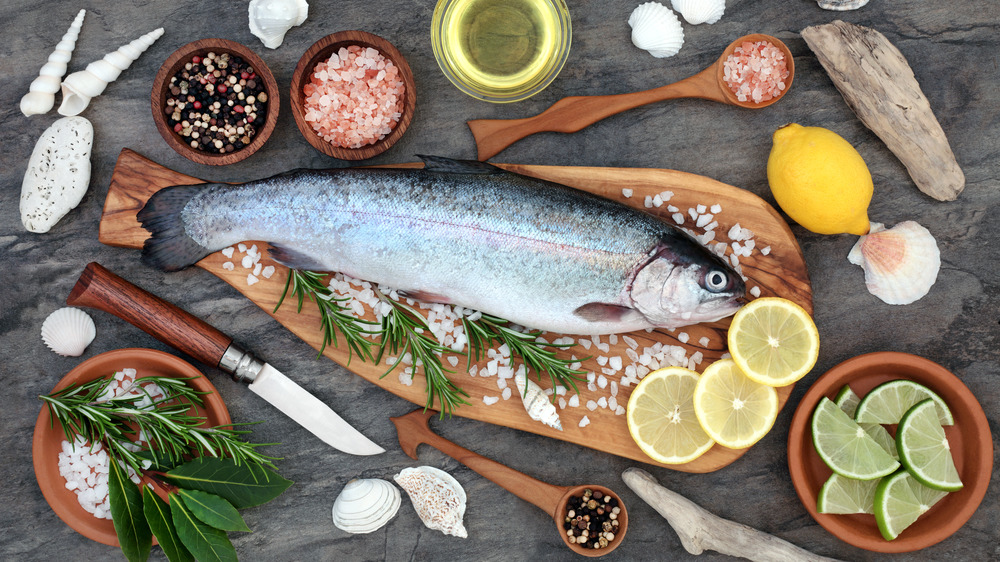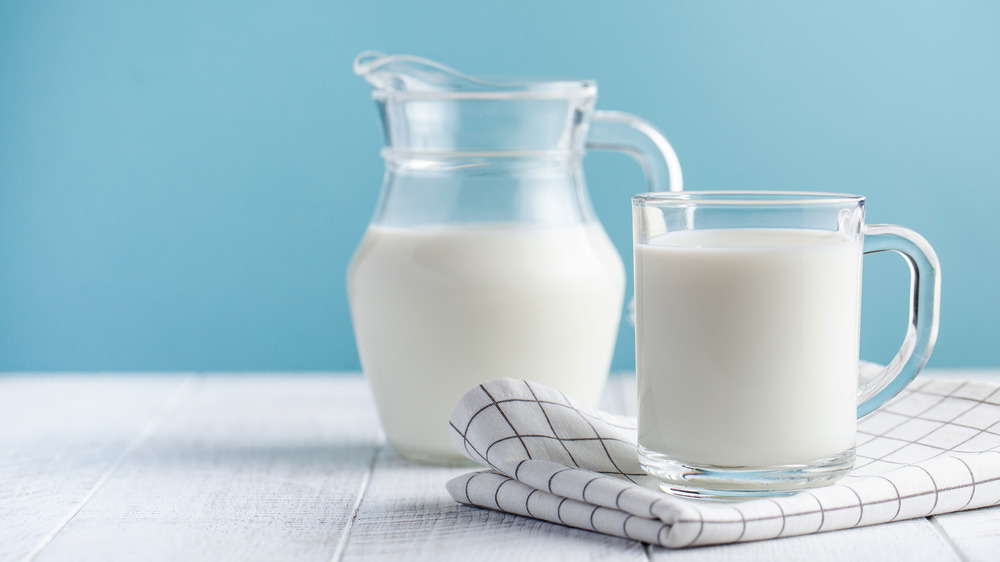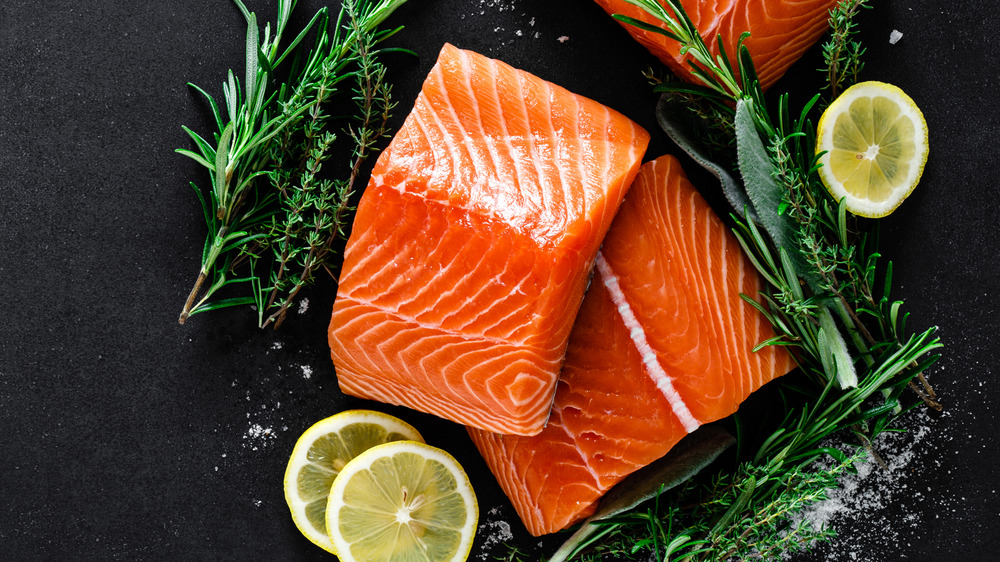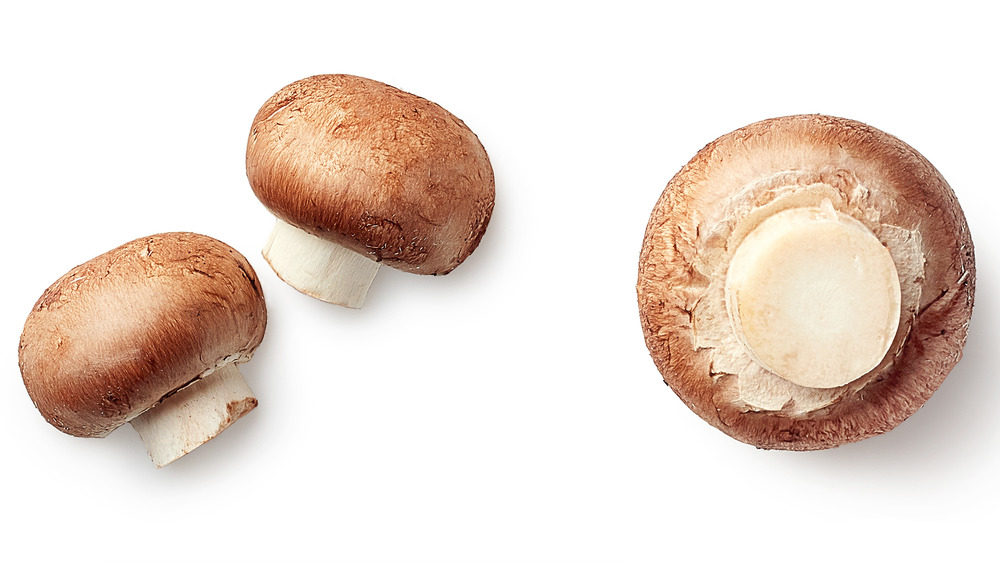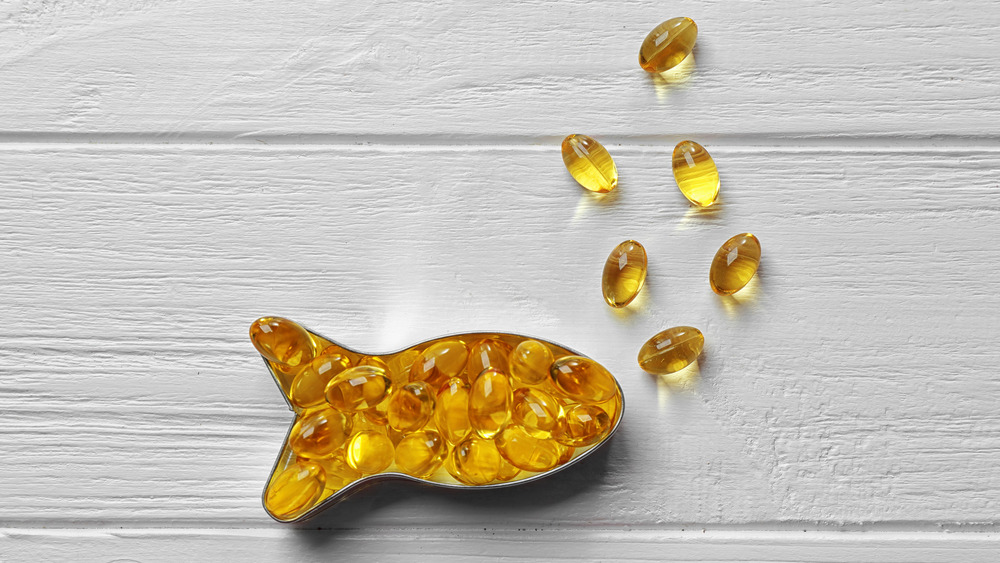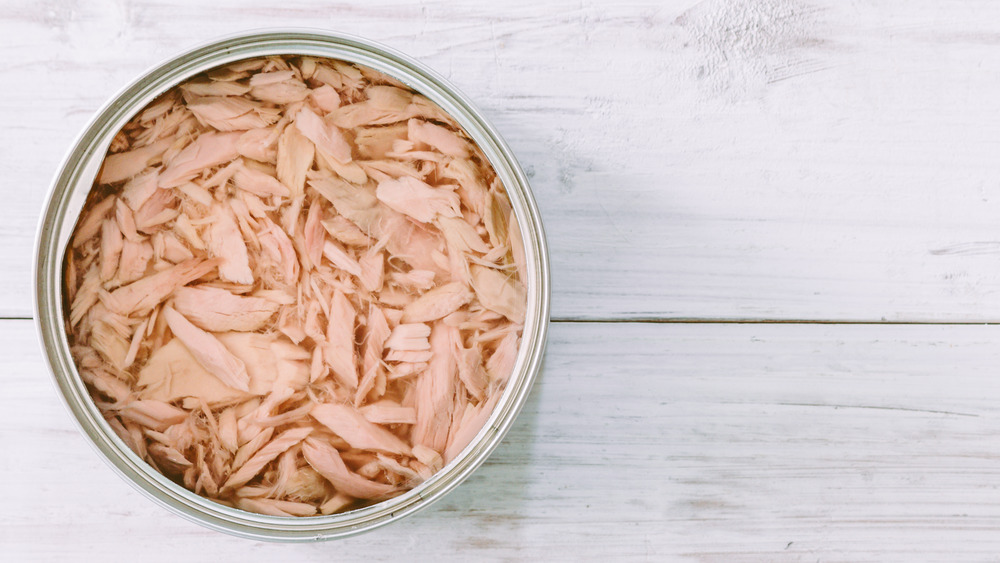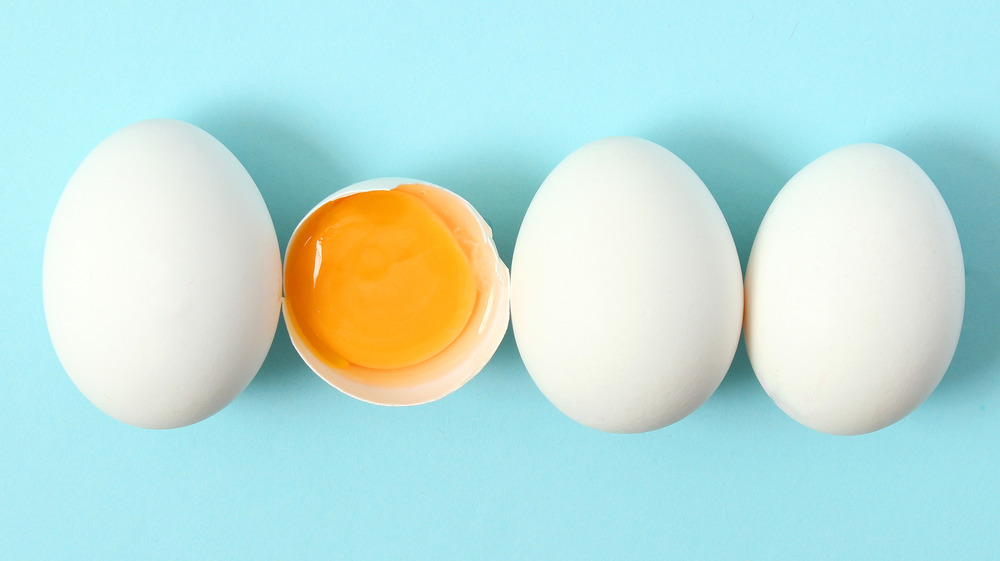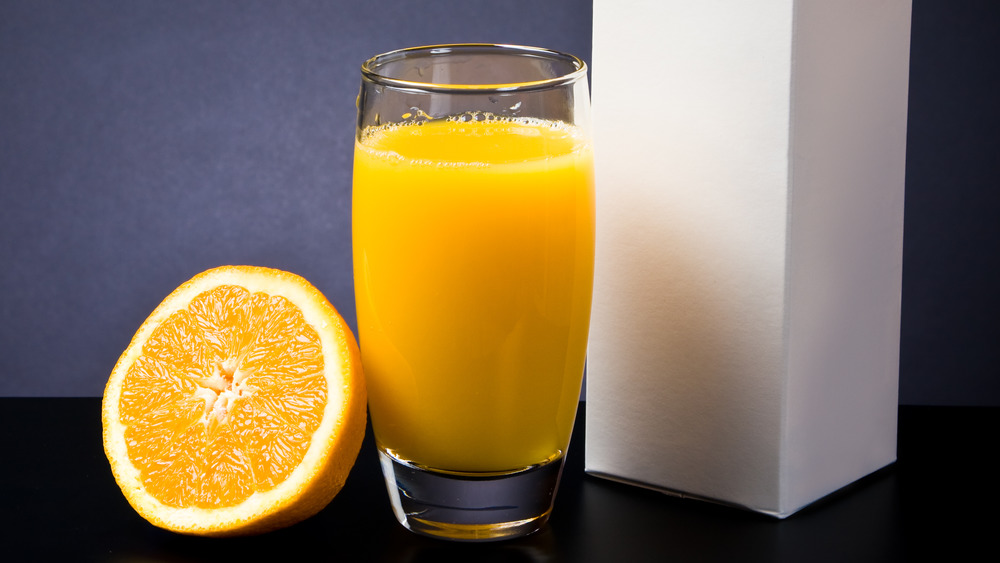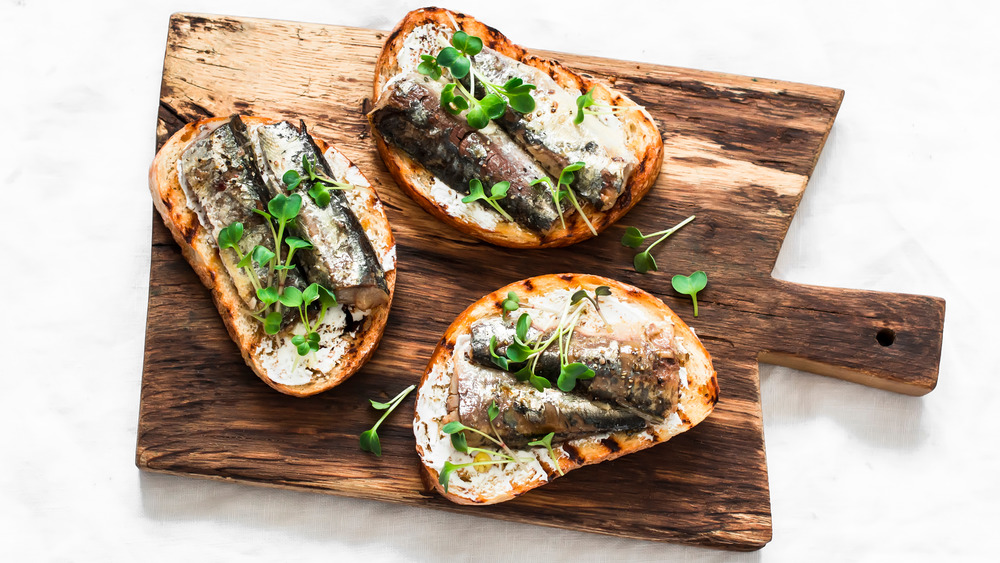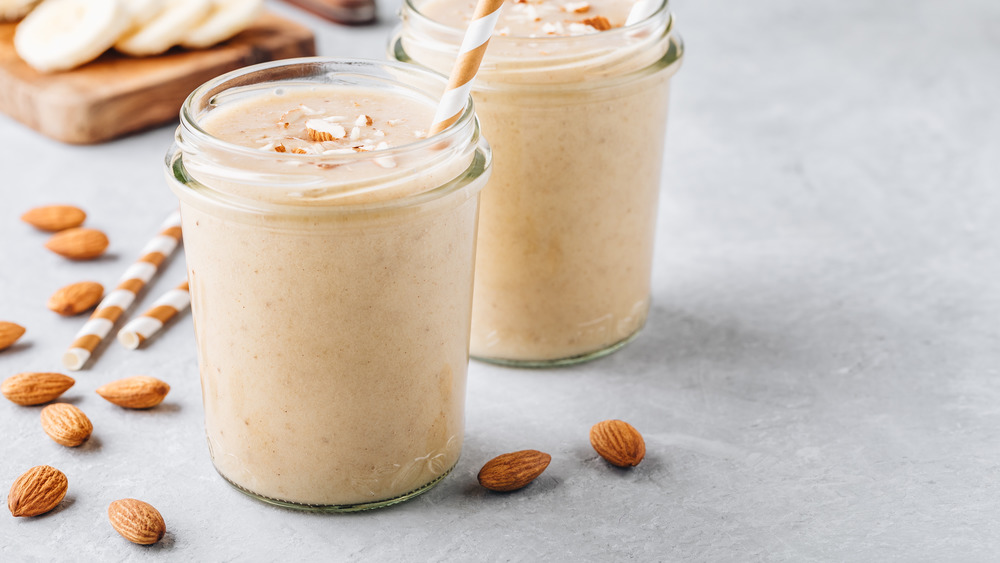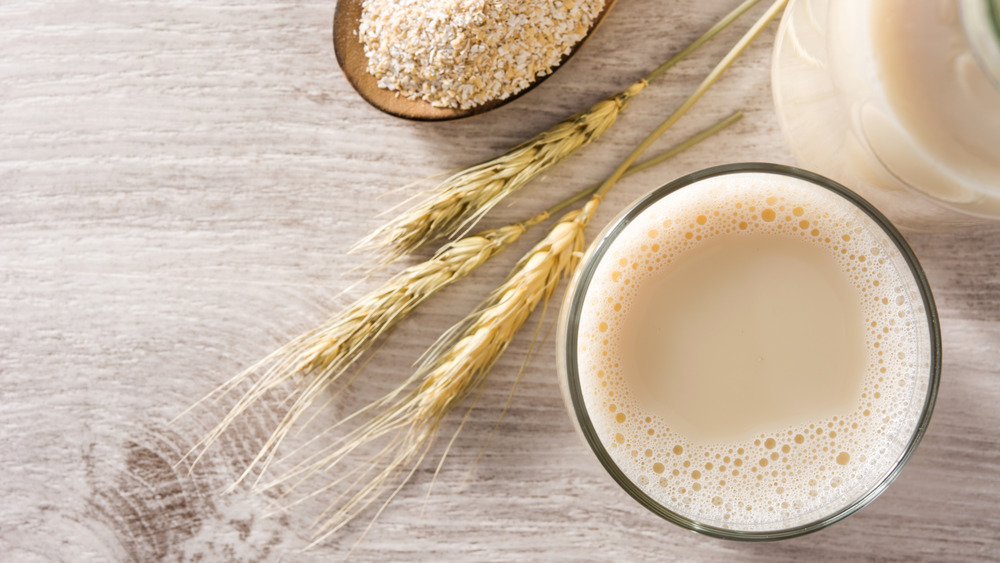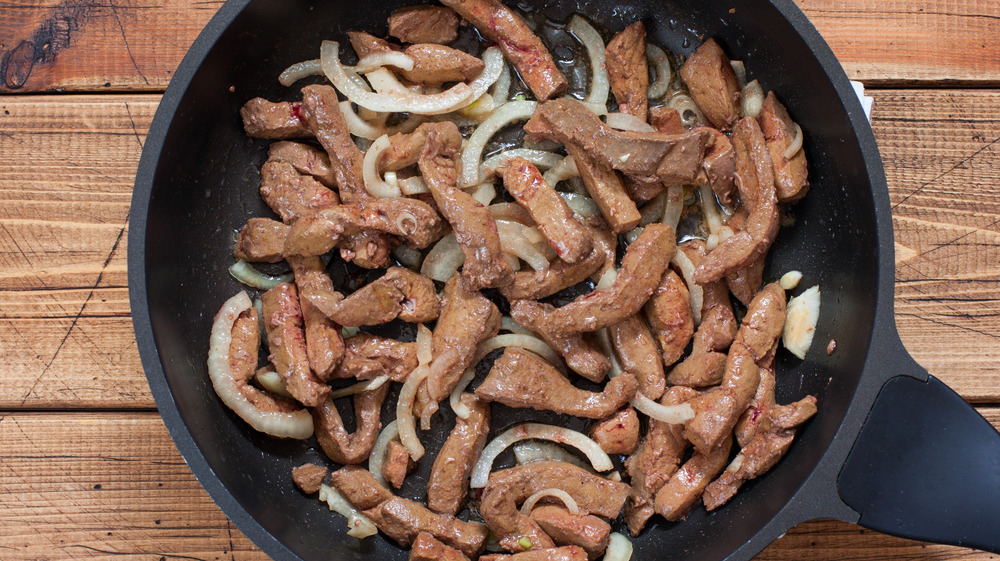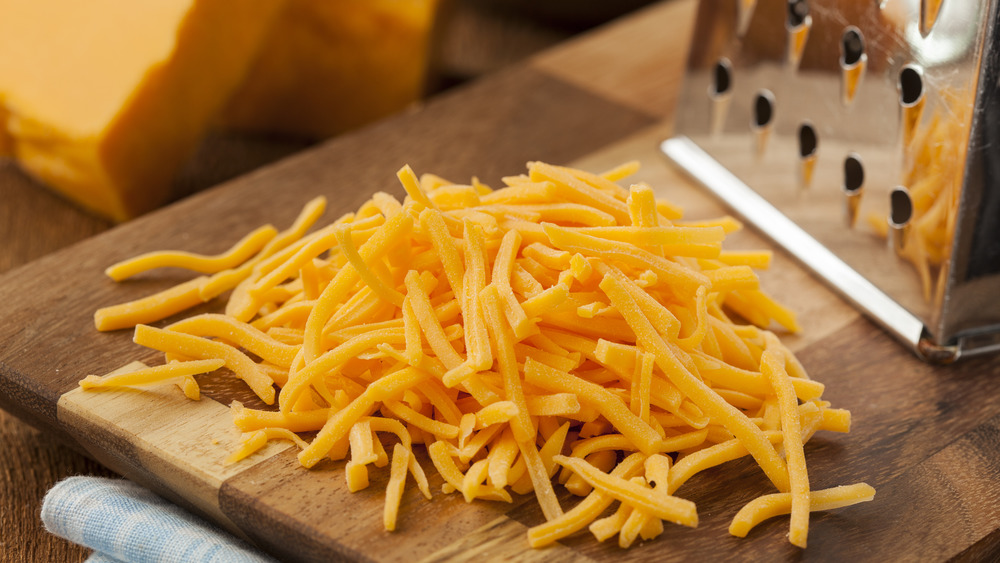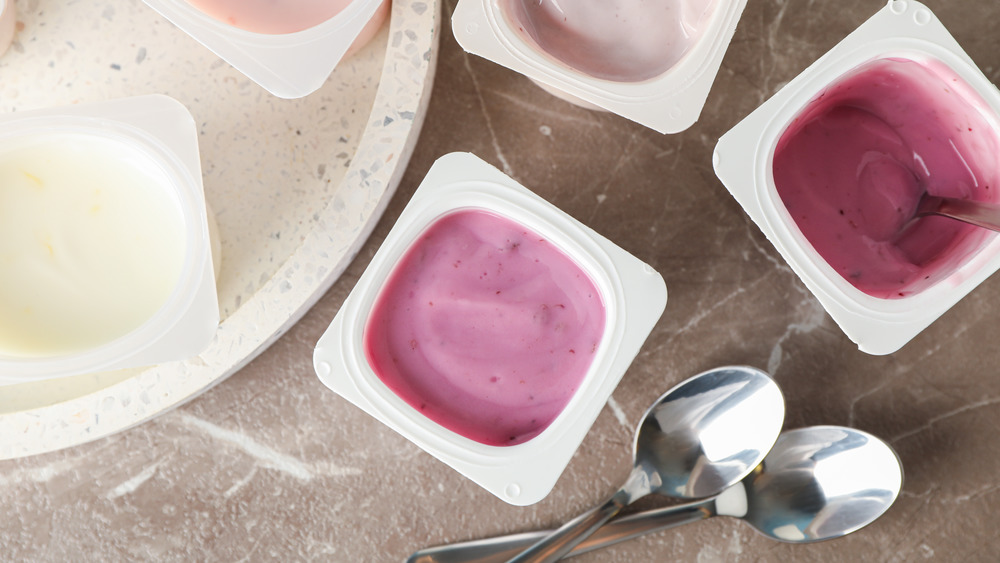If You're Low On Vitamin D, Start Eating These Foods
Vitamin D deficiency is incredibly common. Although it is most prevalent in older adults and hospital patients — 60 percent of nursing home residents are deficient, as are 57 percent of hospital patients — it's also widespread among young, healthy individuals (via Medscape).
Frankly, though, experts don't know exactly how many people are low on vitamin D. It's estimated that about 1 billion people, 13 percent of the world population, has lower than optimal levels, a report in StatPearls revealed. This is a complicated issue since we get vitamin D not only from food but also from exposure to sunlight. In fact, between 50 and 90 percent of our vitamin D is absorbed from sunlight through our skin. Since dark skin absorbs less vitamin D, it seems that people with darker skin are more likely to be vitamin D deficient. Likewise, people who spend more time indoors are more likely to be deficient, and a person might get significantly less vitamin D in cold, dark months than in warm, sunny months (via StatPearls).
Still, vitamin D-rich foods can help! If your doctor finds that you're low on vitamin D or if you're in an at-risk group, here are some foods to add to your diet.
Rainbow trout has a ton of vitamin D
If you're sick of eating chicken for dinner every night, you'll be pleased to know that switching things up might benefit not only your palate but also your health. According to the National Institutes of Health, fatty fish is the best food source of vitamin D out there.
Of all the vitamin D-rich fish out there, farmed rainbow trout is the best option. Three ounces of cooked trout — about the size of a deck of cards, and probably less than you'd eat in one sitting — contains 645 international units (IUs) per serving, about 81 percent of the recommended daily value of 800 IUs.
If you've never cooked or eaten trout before, here's what you need to know: It's a relatively small fish, so the filets are thin and it cooks quickly. You can cook it like you would any other fish, and should cook it to an internal temperature of 145 degrees Fahrenheit for safety. You may find baking to be the easiest method of cooking trout, at least if you're new to preparing seafood.
Fortified milk will give you a good boost of vitamin D
Although cow's milk doesn't naturally contain any vitamin D, milk in the United States is typically fortified with both vitamin A and vitamin D (via Healthline). In one 8-ounce glass of fortified milk, you'll get up to 120 international units (IUs) of vitamin D, about 15 percent of the recommended daily value of 800 IUs, according to the National Institutes of Health.
Of course, vitamin D isn't the only important nutrient found in milk. It's packed with calcium, phosphorus, potassium, and B vitamins. It's also a good source of protein, Healthline explained.
If you want to consume more milk but don't love the idea of just drinking it straight, there are so many other things to try. Turn your morning coffee into a latte by adding a whole cup of steamed milk instead of just a splash. Cook oatmeal with milk instead of water. Combine milk with a high-fiber, low-sugar cereal for a nutritious breakfast that takes less than a minute to prepare. Or, blend up a smoothie using milk as your liquid base.
Salmon packs a big punch of vitamin D
A great way to sneak more vitamin D into your daily meal routine is to choose salmon as your protein a few times a week. Three ounces of cooked sockeye salmon contains 570 international units (IUs) of vitamin D, or about 71 percent of your recommended daily value, per the National Institutes of Health.
If you've never cooked salmon before, it's best to start out by baking the fish in foil, which is pretty much impossible to screw up. For something a little more interesting, try Mashed's pistachio-crusted salmon.
It's true that fresh salmon can be a little pricey, but there are plenty of budget-friendly options on the market, too. Often, you can find pre-cut frozen salmon filets in the freezer section of your grocery store for a significantly lower price than their fresh counterparts. Or, look for canned salmon in the canned fish aisle, hiding right next to the tuna. (You'll wonder why you never thought to try it before!)
If you need more vitamin D in your diet, try mushrooms treated with UV light
While most major sources of dietary vitamin D are animal foods, mushrooms can also be a good source if they've been exposed to UV light. Exposing mushrooms to just a couple seconds of UV light after harvesting them increases their vitamin D content and helps them retain freshness and a pleasant appearance. And, don't worry: It's totally safe, a report in Food and Chemical Toxicology confirmed.
Just a half-cup of sliced white mushrooms that have been treated with UV light contain 366 international units (IUs) of vitamin D, roughly 46 percent of the recommended daily value, according to the National Institutes of Health. Read the label of your mushroom package to find out if it's been treated with UV light, and choose mushrooms that have if you can.
If mushrooms aren't a regular part of your cooking routine, it might be time to change that. If they're not your favorite, try chopping them up and adding them to meat sauce, where their taste will be almost undetectable and they'll add texture and nutrients. If you love mushrooms, add them to your morning omelet, salads, stir-fries, casseroles, and big trays of roasted vegetables.
A spoonful of cod liver oil contains all the vitamin D you need, and then some
Okay, we know that cod liver oil doesn't sound like the most appealing thing to eat. And, truth be told, it isn't. It's fishy, and it literally means swallowing a spoonful of oil in the morning or afternoon.
The thing is, though, cod liver oil is the absolute best food source of vitamin D out there. One tablespoon of cod liver oil contains 1,360 international units (IUs) of vitamin D, which is 170 percent of the recommended daily value (via National Institutes of Health). Again, though, cod liver oil does taste a little fishy going down. If that really turns you off, you can opt for a capsule.
When you're figuring out which one to buy, choose one that's been verified by a third party, like the U.S. Pharmacopeia. Since supplements aren't regulated by the Food and Drug Administration, a third-party seal helps ensure that your fish oil capsules actually do contain the amount and quality of fish oil that's indicated on the label, which means you're getting all the nutritional benefits that you're paying for.
Canned tuna provides some vitamin D
If you're looking for a budget-friendly way to add more vitamin D to your lunches, try canned tuna. Three ounces of light tuna fish canned in water (drained) contains 40 international units (IUs) of vitamin D — about 5 percent of the recommended daily value (via National Institutes of Health).
Of course, 5 percent doesn't make a huge dent in the amount of vitamin D that experts recommend you consume every day. Still, every little bit adds up, and eating tuna salad for lunch or throwing some canned tuna into a pasta or salad for dinner can help you hit your daily goal.
One thing to keep in mind about tuna is that there's such a thing as eating too much. According to the Environmental Defense Fund, you should always choose chunk light tuna over solid or albacore tuna, since it has lower mercury levels. They say that adults can safely consume one 3-ounce serving every week, which is a fairly conservative recommendation. If you're worried about mercury levels, you can limit your tuna consumption and look to get vitamin D from other food sources.
Boost your vitamin D intake with egg yolks
Do you need yet another reason not to skip the egg yolk? Not only are the yolks flavorful and luscious, they're also rich in many important nutrients, including vitamin D. One scrambled egg contains 44 international units (IUs) of vitamin D, about 6 percent of the recommended daily value, according to the National Institutes of Health, and the vast majority of that vitamin D is found in the yolk.
If you want to get even more bang for your buck out of your morning omelet, you can seek out eggs from chickens that have been fed a vitamin D-enriched diet. One study published in the Journal of Food Science showed that feeding hens a diet rich in vitamin D significantly increased the amount of vitamin D found in their eggs. While this isn't yet common practice, it could be in years to come.
If you want to add more eggs to your diet, there are so, so many ways to do it. Scramble up two eggs for breakfast or whip up an omelet. Add a hard- or soft-boiled egg to your lunch sandwich or salad. Toss an egg into your fried rice or stir-fry at dinner. Heck, even baked goods made with eggs will deliver some vitamin D.
Fortified orange juice can help improve your vitamin D levels
Because an estimated 1 billion people around the world are thought to be deficient in vitamin D, some countries have gotten creative by fortifying common foods with the essential vitamin. Orange juice is one of those foods.
In a 2003 report published in the American Journal of Clinical Nutrition, authors took a look at the safety and bioavailability of vitamin D consumed through fortified orange juice. They found that drinking fortified juice is safe and effectively increases vitamin D levels in adults.
So, how much vitamin D can you expect to get from a glass of fortified orange juice? One 8-ounce cup provides 40 international units (IUs), about 5 percent of the recommend daily value. Sure, that's not a huge amount, but it's always worth buying fortified juice over the unfortified stuff. If you don't want to just sip a glass of orange juice with breakfast, try getting creative with it by using it as the liquid base for smoothies, freezing it into popsicles, or even using it as a mixer for cocktails if you drink alcohol.
Sardines may be small, but they're full of vitamin D
Sardines get an unfairly bad rap. Yes, they have a strong flavor that's a little too funky for some people. But if you love foods that add a ton of flavor to otherwise plain dishes, then sardines are definitely something to try.
They also pack a ton of vitamin D for their size. Two Atlantic sardines canned in oil (drained) contain 46 international units (IUs) of vitamin D, about 6 percent of your daily value. They're also a great source of protein and healthy fats.
The best part about sardines is that they're inexpensive and convenient. You can buy them canned at your local grocery store and keep them in your pantry for months until you're ready to use them. They're great tossed into pasta or on top of a salad, but you can also use them as a toast topper with some spreadable cheese or butter. Squeeze on a bunch of lemon to make them taste fresh, and use as many or as few sardines as you want, depending on how strong you want their flavor to be in your finished dish.
Almond milk fortified with vitamin D is a good alternative to cow's milk
Fortified cow's milk is a good source of vitamin D, but that's not super helpful to the roughly 36 percent of Americans who can't properly absorb lactose, the main carbohydrate in milk. While lactose-free dairy milk is one option, there's also non-dairy milk fortified with vitamin D. For example, an 8-ounce cup of fortified almond milk contains 101 international units (IUs) of vitamin D, about 13 percent of your recommended daily value (via FoodData Central). It's also got significant amounts of vitamin E and vitamin A.
If you're not sure what to do with almond milk, try using it exactly as you would use regular dairy milk. Its consistency is a bit thinner than dairy milk, so you might need to add more to your coffee to get the same effect. However, almond milk works great for cooking oatmeal, as a cereal add-in, and as a liquid base for smoothies. Look for cartons that specify they've been fortified with vitamin D, as not all almond milk is.
Fortified oat milk will provide you with more vitamin D than fortified cow's milk
Non-dairy milks are nothing new, but oat milk is a relatively new addition to the field that was once dominated by soy and almond milks. Made from soaking oats in water and straining the liquid, oat milk is a great substitute for regular cow's milk.
As with cow's milk, many brands of oat milk are also fortified with vitamin D. For example, an 8-ounce glass of Planet Oat fortified oat milk contains 4 micrograms of vitamin D, or about 20 percent of your recommended daily value — which is more than fortified cow's milk. Because oat milk is made with oats, it's also relatively high in carbohydrates (19 grams per cup) and fiber (2 grams per cup). It's a little lower in protein than regular cow's milk, but can still be part of a filling breakfast or snack.
If you're not sure what to do with oat milk, start with the obvious and use it to cook your morning oatmeal. If you like the flavor, you can also use it to flavor your morning coffee, or use it as the base of your morning bowl of cereal.
Beef liver boasts a surprising amount of vitamin D
Look, we get it: To anyone who isn't familiar with eating organ meat, beef liver doesn't exactly sound appetizing. The truth is, though, that beef liver is one of the most nutrient-dense animal foods you can eat. A 3-ounce serving of braised beef liver contains 42 international units (IUs) of vitamin D, roughly 5 percent of the recommended daily value (via National Institutes of Health).
Don't know how to cook or eat beef liver? That's okay! You can find beef liver at a butcher shop, and maybe even at the butcher's counter of your local grocery store. The most classic way to eat beef liver is to make braised beef liver and onions, although there are several ways to do that. This Venezuelan version from Mommy's Home Cooking is tasty and relatively simple. If that doesn't appeal to you, try a Chinese-style liver and onions. The bottom line? Cast your doubts aside and just give beef liver a try. Maybe you'll love it!
A sprinkle of cheddar cheese provides a boost of vitamin D
Is there anything better than hearing that one of your favorite foods also contains important nutrients? Truth be told, this is probably always the case, since all foods contain nutrients. But in the case of vitamin D, cheese lovers in particular have something to celebrate.
A 1-ounce serving of cheddar cheese contains 12 international units (IUs) of vitamin D, about 2 percent of the recommended daily value, according to the National Institutes of Health. That may not sound like a lot, but if you combine it with two eggs (90 IUs of vitamin D), you get an omelet that provides about 14 percent of the vitamin D you need in a day. Or if you eat it on a snack board alongside sardines (46 IUs for two), you can get 8 percent of your vitamin D for the day.
To be honest, we think this is great news. When is cheddar cheese not the perfect snack or add-on to a meal? Heck, it even works as part of a dessert spread if you put out a fancy cheese plate!
Your daily serving of fortified yogurt will provide you with vitamin D
The health benefits of yogurt are many. It's high in protein, probiotic bacteria that support a healthy gut, and several important nutrients like calcium and B vitamins, according to Healthline. And while it's not naturally rich in vitamin D, many types of yogurts are fortified to help you get in enough vitamin D every day.
An 8-ounce (one cup) container of fortified yogurt contains 118 international units (IUs) of vitamin D, about 15 percent of your recommended daily value (via FoodData Central). Combine that with a glass of fortified orange juice (40 IUs), and you can eat a breakfast that contains an impressive 20 percent of the vitamin D that experts recommend you eat in a day!
If you don't like eating yogurt on its own, there are plenty of other ways to use it. Stir it into overnight oats to add nutrients and protein. Use it to make a savory sauce with herbs and garlic. You can even try blending it into a smoothie, although you'll probably have to add water or milk as well to make sure the consistency isn't too thick.

